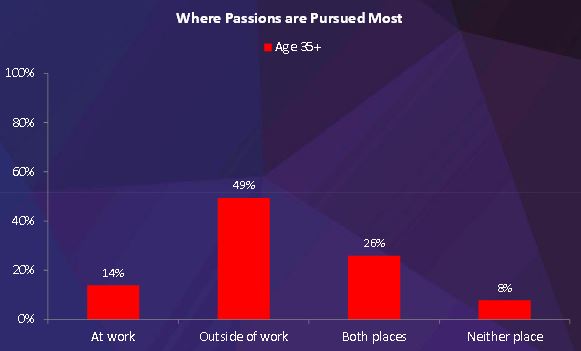As we recap the mature marketing content that our followers were most engaged with during the past week, we will gain further insight into how marketers can better address the needs of the 50+ demographic.
This week, an AARP study provides insight on the steps marketers should take in order to address the concerns and desires of older adults as they begin looking towards retirement.
In addition, an in-depth look at the modern news consumer provides food for thought for marketers as they strategize which platforms will deliver their messaging now, and in the future.
MOST CLICKED: With aging comes new challenges — and not just for older adults.
In a recent survey of adults ages 35-plus, the American Association of Retired Persons (AARP) uncovered both the fantasies and fears that adults face as they plan for retirement and beyond. The survey provides some key takeaways for marketers in the senior living industry.
The first takeaway is that, for many, lifestyle really is a key factor when making decisions in regards to retirement living.
According to Becky Gillan, AARP Research’s Senior Vice President: “Among those that are working full time and want to retire some day, most would like to travel (85%), pursue a passion (76%) and volunteer (69%) in retirement.”
 Is your community providing the necessary avenues from which potential residents will be able to pursue their passions? If not, then it’s time to start implementing programs in which residents can pursue the endeavors that they enjoy in areas such as the arts, nature and sports.
Is your community providing the necessary avenues from which potential residents will be able to pursue their passions? If not, then it’s time to start implementing programs in which residents can pursue the endeavors that they enjoy in areas such as the arts, nature and sports.
The new generation of seniors expects much more than just a bed and three meals a day in a community tucked away in isolation from the rest of civilization. They want to socialize and be immersed in the surrounding community. More and more communities are implementing multi-dimensional wellness programs for their residents.
If your community does not have these types of programs and is struggling to maintain occupancy, this may be a reason why.
Though lifestyle is a key component, it is not the only factor taken into consideration as older adults plan for the future. Some of the fears that adults specified in the study include not having enough money, not knowing where to begin and not being able to find helpful resources.
Providing services and resources that will help potential residents protect their assets and manage their care needs is a crucial step in ensuring that they trust you to help manage their future needs as they arise.
The study was conducted by Alan Newman Research, Inc. from May 17-24, 2016 through random-digit-dial telephone calls. To read more about the fears and fantasies of the 1,026 adults surveyed, click here.
MOST SHARED: The most shared link from last week reinforces a point that, with the maturation of digital technologies, more Americans, including those who are 50+, are choosing to consume the news through digital platforms than ever before, as seen in the graph below. 
While TV remains the most popular medium in the 50-64 and 65+ age groups, the percentage of people in those groups who claim that they often get their news online (29% and 20%) is too large to be ignored.
Marketers who conclude that digital campaigns targeted towards the 50+ audience are not worth the cost are neglecting a sizable portion of their target demographic — especially when considering the cost of TV advertising versus digital advertising.
It’s also important to keep in mind the percentage of those ages 30-49 who receive most of their news online. As digital technology continues to become more popular, that number will only increase. Those in the upper end of this age bracket exert influence over CCRC and Active Adult community prospects, and will later be prospects themselves. It’s never too early to start planning in order to effectively reach these consumers.
Click here to read more about the current trends in how Americans adults receive their news.


